category » Optics & Photonics

A monolithically integrated photonic modulator and driver circuit is a key building block toward realizing a dense and energy-efficient communication…

Wavelength-division multiplexed (WDM) silicon-photonic links form a promising alternative to traditional electrical interconnects. However, the essential component of these WDM…
State-of-the-art ultrafast cathodes are based on the photoelectric effect, where electrons are emitted from a flat surface using ultraviolet (UV)…
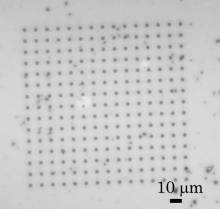
We show patterning of thin J-aggregate[1] films using nano-imprinting. Unlike the conventional microfabrication techniques, such as direct-write or lift-off processes,…
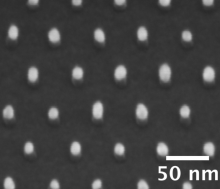
Nanostructured photocathode arrays can be used as the electron sources for the compact coherent X-ray source. Femtosecond laser pulses were…
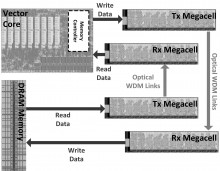
Integrated photonic interconnects enable new possibilities for bandwidth and energy-efficiency driven VLSI applications, such as many-core processor systems, by removing…
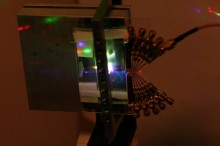
In this research we seek to develop acousto-optic, guided-wave modulators in proton-exchanged lithium niobate[1] for use in holographic and other…
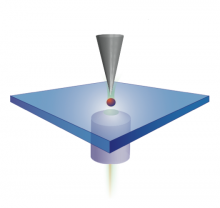
The diffusion of excitonic energy from within the photosensitive layer of a photovoltaic cell towards the charge separation interface is…
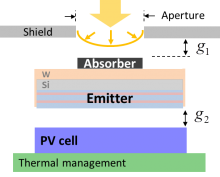
Solar thermophotovoltaic (STPV) devices have the potential to overcome the Shockley-Queisser limit by converting solar radiation to a narrow-band thermal…
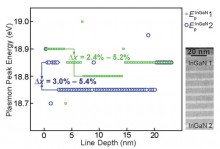
Solid state light-emitting diodes (LEDs) containing InxGa1-xN (0 ≤ x ≤ 1)/GaN hetrostructures as active components are of particular importance…
Efficient transparent electrode materials are vital for applications in smart window, LED display, and solar cell technologies. These materials must…
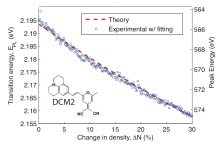
Significant technological progress of organic semiconducting structures has led to their commercialization in the form of organic LED displays, solid…
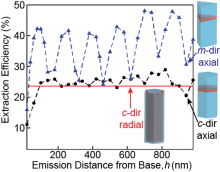
III-nitride nanowire-based light-emitting diodes (LEDs) are promising alternatives to thin-film LEDs for solid-state lighting[1]. Facile strain relaxation in nanowires allows…
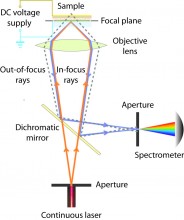
The main goal of this work is to introduce functional natural materials into the design of surface plasmonic structures and…
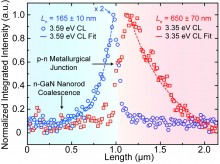
GaN-based nanowires and nanorods are promising materials systems for optoelectronic applications such as high efficiency light emitting diodes[1],[2] or low…
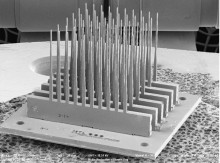
Optogenetics is commonly used for precision modulation of the activity of specific neurons within neural circuits[1], but assessing the impact…

Optogenetics is the safe, effective delivery of light-gated membrane proteins to neurons and other excitable cells (e.g., muscle, immune cells,…
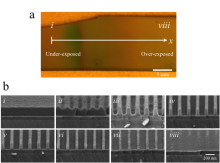
Interference lithography (IL) is one of the most effective and low-cost approaches for large-area nano-patterning and nanostructure fabrication; IL has…
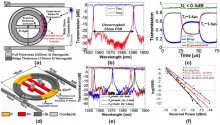
Silicon photonics enables wavelength-division multiplexed (WDM) networks to be efficiently and cost effectively implemented on chip with potential for multi-terabit/s…
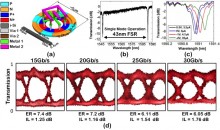
On- and off-chip bandwidth and energy scaling are pushing the limits of CMOS and VCSEL technology, which allow only a…
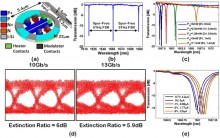
Wavelength division multiplexed systems can achieve high bandwidth by utilizing many channels on a single fiber as opposed to current…
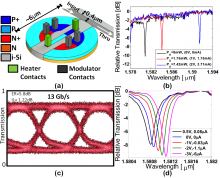
Silicon photonics, because it enables wavelength division multiplexed (WDM) systems, will help to minimize the number of fibers required in…
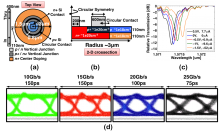
High-performance computing systems require high bandwidth, low power, and scalable optical interconnects to maintain balanced communications in future exascale machines….

Superconducting nanowire single-photon detectors (SNSPDs)[1] based on niobium nitride (NbN) nanowires have shown high speed (< 3ns dead time[2] )…

Electromagnetic phased arrays at radio frequencies (RFs) are well known and have enabled applications from communications to radar, broadcasting, and…

Recent advances in fluorescence microscopy have enabled spatial resolution below the diffraction limit by localizing multiple temporally or spectrally distinguishable…
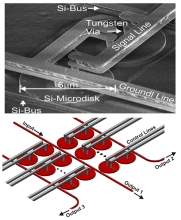
Silicon photonic wavelength selective switches have been recently demonstrated by the Photonic Microsystems Group, led by Prof. Watts, and hold…
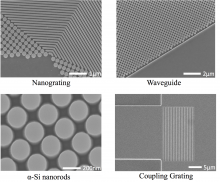
Transformation optics has inspired numerous conceptual devices since the first theoretical model of invisibility cloaks[1],[2]. However, the transition of these…
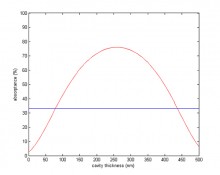
Optical losses limit the system detection efficiency of systems using superconducting nanowire single-photon detectors (SNSPDs)[1]. SNSPDs are typically fabricated with…
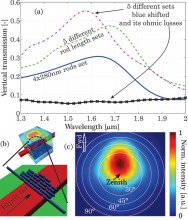
Vertical coupling can be used in silicon on insulator-based optical phased arrays (OPA) to emit light traveling in a waveguide…
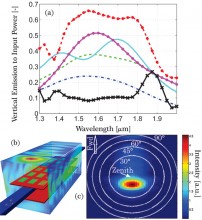
Vertical input/output coupling in the telecom C-band (1535 nm << 1565 nm) has been extensively investigated for coupling to or…
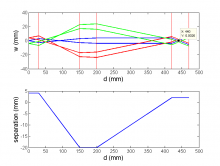
Superconducting nanowire single‑photon detectors (SNSPDs)[1] are a technology that combines single‑photon sensitivity, high speed, and high time resolution in the…
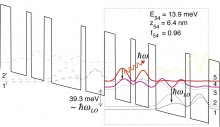
The terahertz frequency range (1-10 THz) has long remained undeveloped, mainly due to the lack of compact, coherent radiation sources….
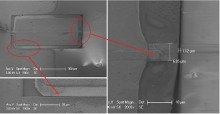
We have demonstrated for the first time in-plane InGaAs/InP laser diodes that are recess-integrated with SiON waveguides on silicon substrates…
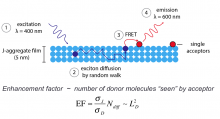
Nature presents us with a fundamental mismatch between the “size” of visible light (~250 nm in free space) and the…